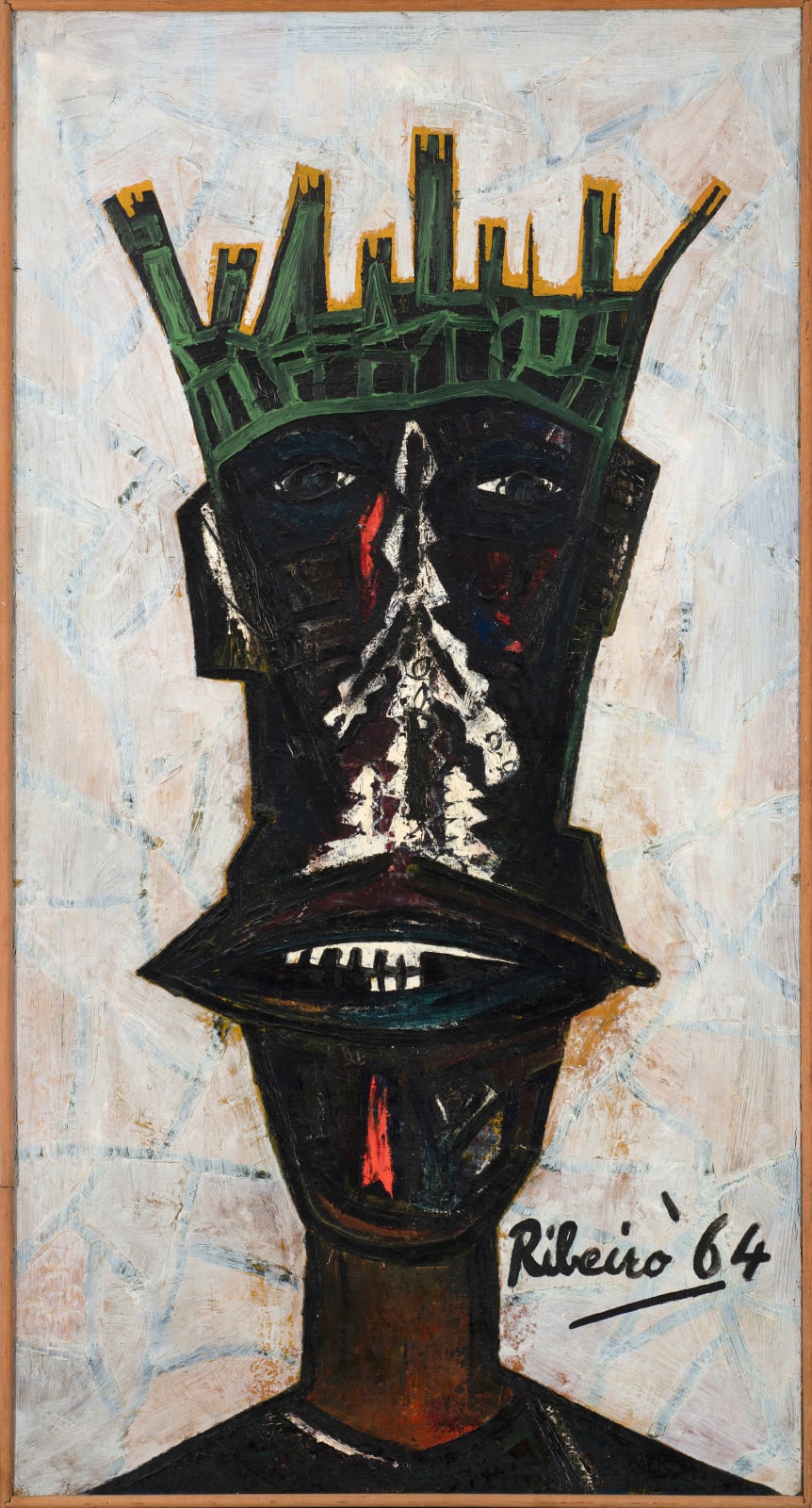Lancelot Ribeiro 1933-2010
Further images
Ribeiro’s bold image of King Lear – his spiky crown reminiscent of Christ’s crown of thorns but also echoing the sharp-edged architectural forms in the artist's early townscapes – relates both to Shakespeare’s troubled king and to the Christian imagery that peopled Ribeiro’s early work. This drew on his Catholic upbringing and education, particularly the harsh regime he endured at St Mary’s Senior Cambridge School Mount Abu (Rajputana) run by Irish Christian brothers in Rajasthan, which he attended between the ages of 9 and 11. In a review of his 1961 Bombay exhibition Ribeiro listed the types of portrait heads he painted at this time as: ‘colonialists, kings, tyrants, Christ (resurrected), tycoons, women and thugs’ (cited ‘Restless Ribeiro’, 2013, p. 38). They included an earlier Untitled image of Christ with a crown of thorns and stigmata, executed in a monochrome palette, in 1961. Through these 'portraits' he explored concepts of power and evil, presenting his subjects facing the viewer in dramatic close up.
Ribeiro’s half-brother, the painter F. N. Souza, who also frequently drew on Christian imagery, used a similarly dramatic contrast of a Black figure against a white backdrop in his ‘Negro in Mourning’ (1957, Birmingham), painted at the time of London’s Notting Hill race riots. Ribeiro's Lear was painted in 1964, the year of the British General Election, which followed the 1962 Act controlling the previous liberal postwar immigration policy, and his own response in co-founding the Indian Painters' Collective, UK (IPC) in 1963. Against this backdrop, King Lear, could also be read as one of a series of self-portraits. An extract from an article on Ribeiro's 1965 Hampstead exhibition related the following encounter: ‘Looking curiously at a painting of a man with a long, lopsided face, a distorted mouth and a strange coloured complexion, I asked the artist what it was. ‘A self portrait’, he answered!' (cited Restless Ribeiro, p. 30).
In the accompanying catalogue to the posthumous 2013 'Restless Ribeiro' exhibition, the artist's friend, Indian poet, translator and critic R. Parthasarathy observed that Ribeiro's ‘true subject’ was his ‘origins – Goan roots, estrangement from India, and exile in London. How does a human being come to terms with multiple histories and in the process achieve wholeness’.


































